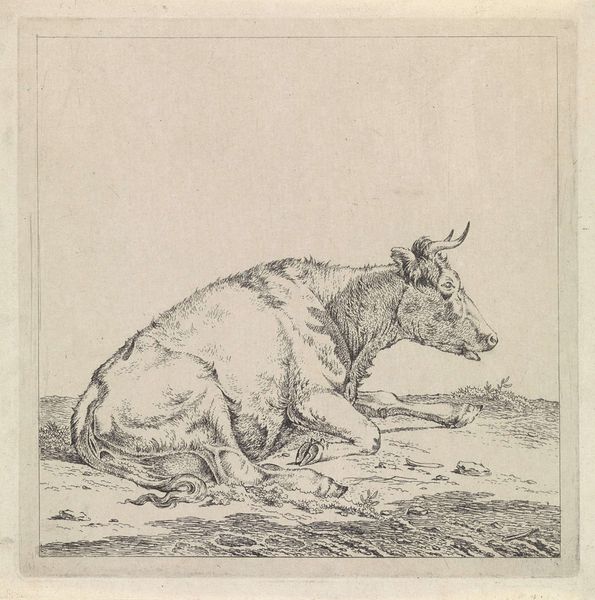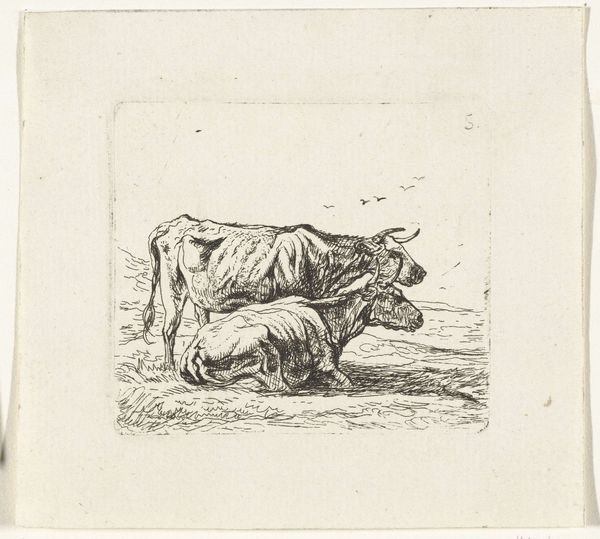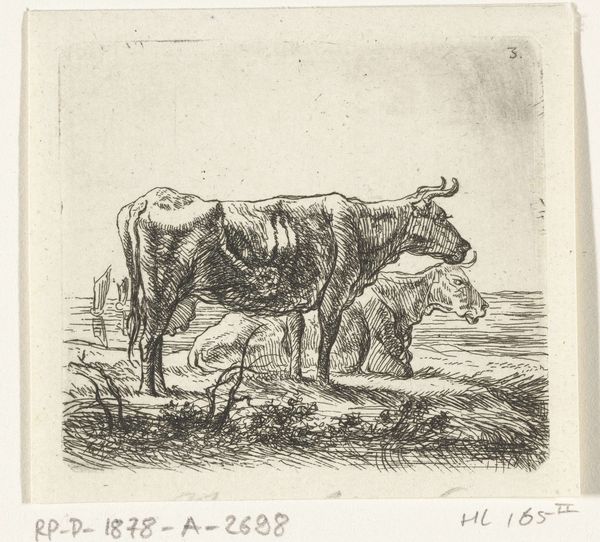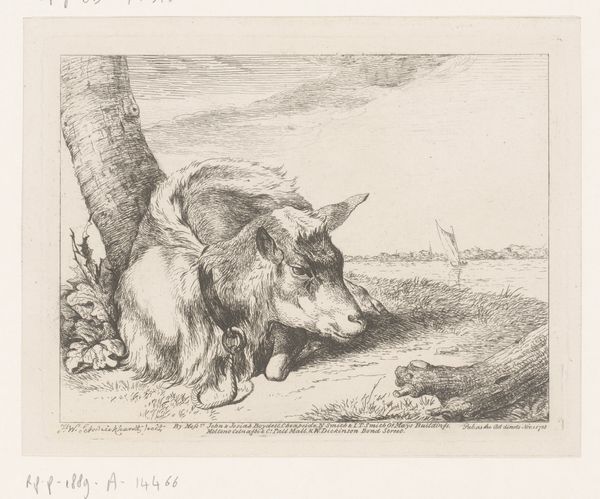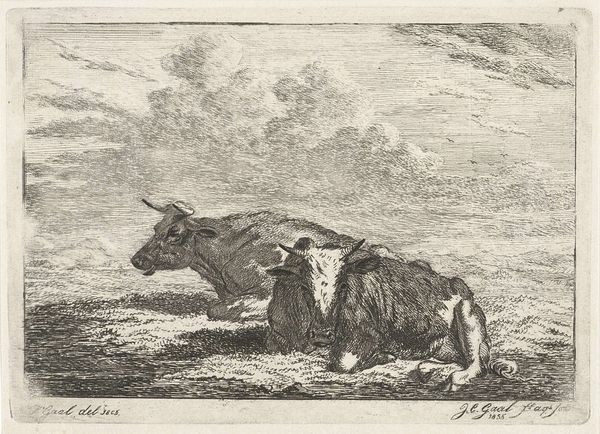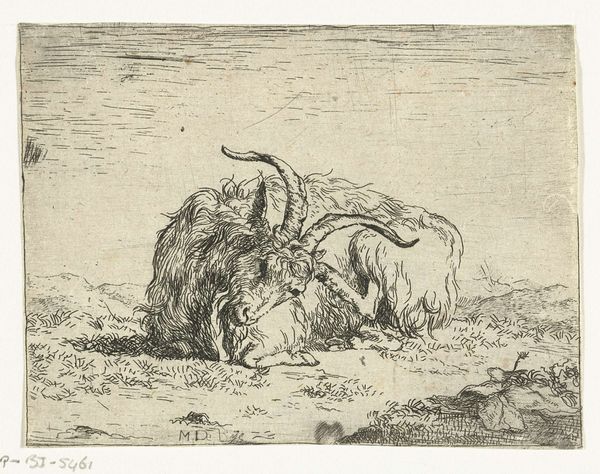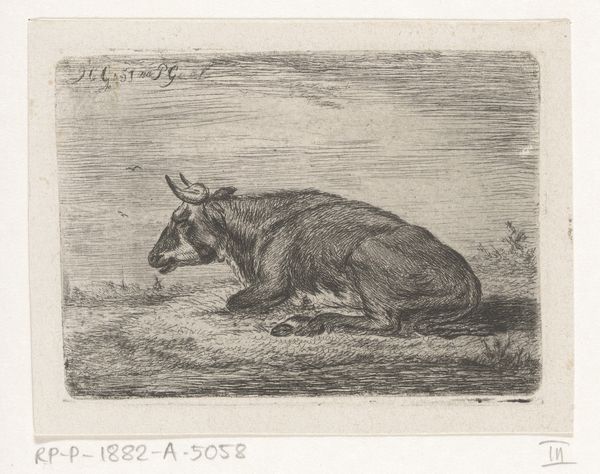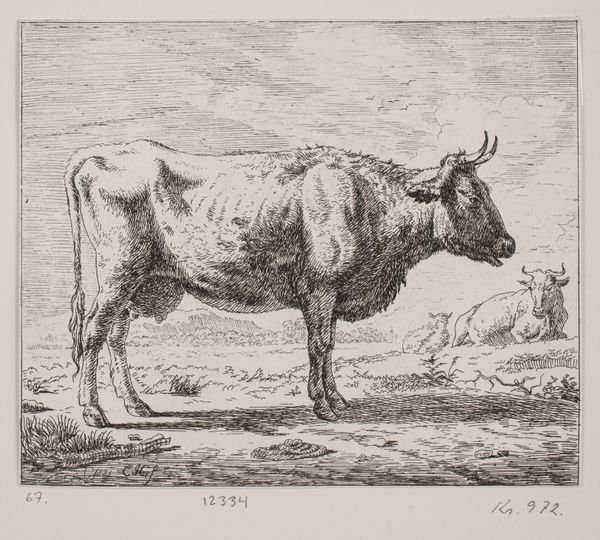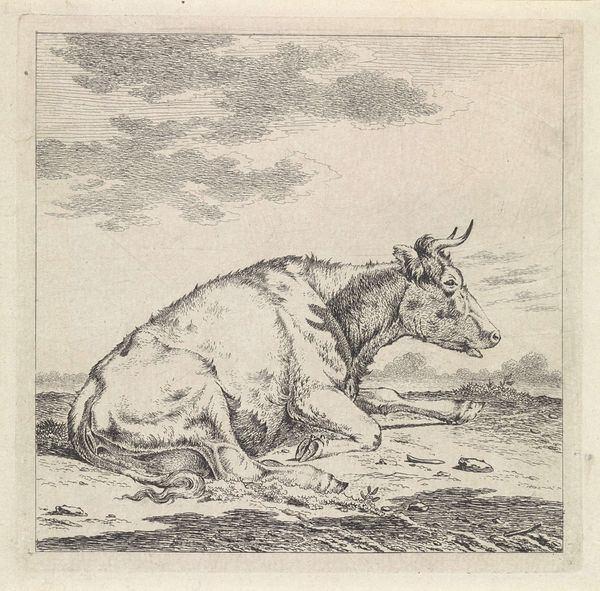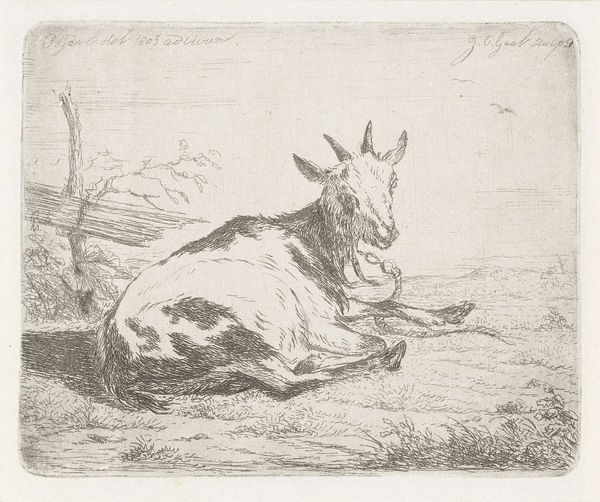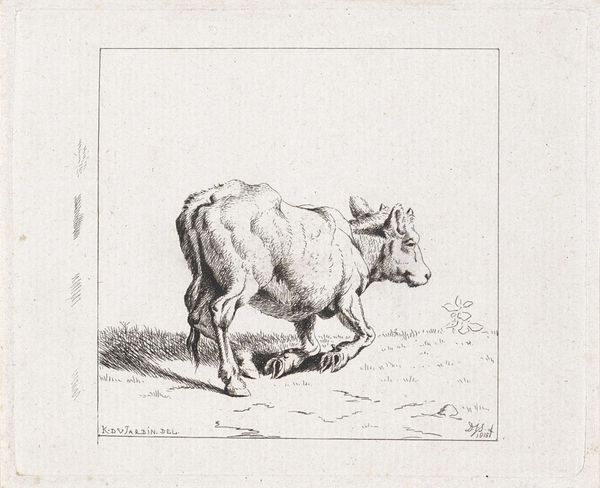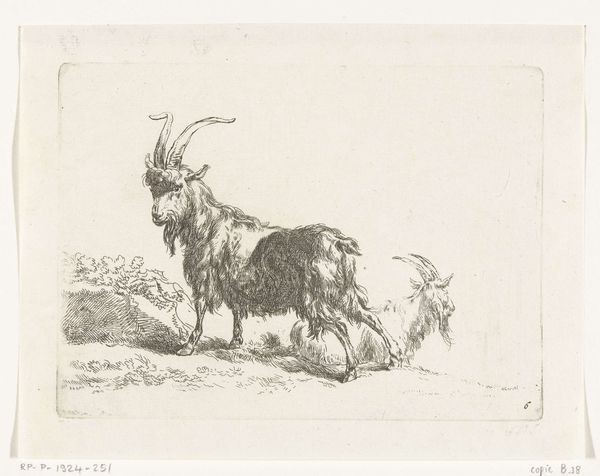
drawing, ink
#
drawing
#
pen sketch
#
pencil sketch
#
landscape
#
ink
#
realism
Dimensions: height 67 mm, width 75 mm
Copyright: Rijks Museum: Open Domain
Editor: Here we have Ernst Willem Jan Bagelaar's "Liggende en staande koe" from 1814, created with ink on paper. It’s a pen sketch depicting two cows in a field, seemingly content. What I find intriguing is its simplicity – almost like a casual observation of farm life. How do you interpret this work within its historical context? Curator: That's a great starting point. What I notice is that while seemingly simple, this pastoral scene occurs during a period of immense social and political upheaval across Europe with the Napoleonic wars. Depictions like this gain traction as national identities are reinforced, seeking an ideal, romanticized version of "home" – the Dutch landscape and its integral component of agriculture became loaded with ideological meaning. How does that shift your perception of the artwork? Editor: That’s fascinating! I hadn't considered the rise of national identity. Does the medium of ink drawing, more easily reproducible than a painting, perhaps suggest a broader distribution and appeal to reinforce this national imagery? Curator: Precisely! Think about how prints and drawings became crucial for disseminating these idyllic views. Consider the tradition of Dutch landscape painting from the preceding century too. Does this image reflect the traditions of artists like Cuyp whose name appears inscribed? Editor: I see it. It is both familiar and novel for its time. So, we are seeing not just cows, but a carefully constructed representation of Dutch identity at a specific historical juncture, disseminated to reinforce the emerging nation state. Curator: Exactly. Art always exists in dialogue with the times. Editor: It gives you a lot to chew on, pardon the pun! Thanks!
Comments
No comments
Be the first to comment and join the conversation on the ultimate creative platform.
